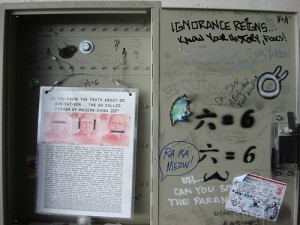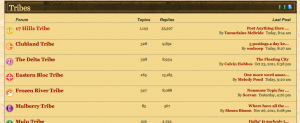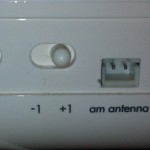You know the scene from the movie ‘Network‘ – “I’m as mad as hell, and I’m not going to take this anymore”
I’d seen the clip before too. But it wasn’t until I actually watched the whole of ‘Network’ that I realized: it’s actually the part that comes right after Peter Finch delivers that memorable monolog that’s really amazing. We see shots of tv audiences around the country heeding Finch’s character’s call to “get up right now and go to the window,open it and stick your head out and yell.”
Now the fact that Fay Dunaway’s character takes away from this is “We’ve struck the mother lode.” It’s one that many people creating transmedia would also see as significant: the audience is SO engaged with the show that they are moved to actually get out of their chairs and do something. That’s important. And if that happens on a project of yours, you’ll most likely try to measure it as best you can and put it in a case study. And you should. Engagement is an important marker for success (now, how you measure that, that’s a whole other post).
But the magic that’s shown in that scene isn’t just an engaged audience willing to actually do something active instead of passively tuning in to the TV. The magic is, when all of those people stick their head out the window and yell, they see each other yelling. They are no longer a sea of lone individuals silently and unknowingly watching the same show as their neighbor. They all have a moment of shared experience when they yell out the window. We are treated to this audience’s moment of recognition of each other. In this instance, they see not only have they all had this same experience of watching this tv show, but that show has moved them to action.
Now, Network doesn’t really explore what happens to these viewers after this moment of shared experience (other than the fact that they keep tuning in, this isn’t really pertinent to the film). But, we can recognize this public show of activity and recognition of other’s appreciation for a TV show as one way to define fandom. But this isn’t really a post about fandom – it’s about something parallel (often intersecting) and equally important.

Lock box in the Jejune Institute experience. In addition to small messages, players would often leave advice, contact information, or even small trinkets for their fellow participants. Photo by Everfalling.
For me, the magic thing that’s shown in this scene is what I’ve come to call “shared experience.” Shared experience is one of those central building blocks of community and something that we feel compelled to seek out. In new social situations, it gives us a quick way to feel connected. Often, when you meet someone for the first time, you look for experiences you have in common. That feeling is what drives the popularity of book clubs. Shared experience powers these gatherings and has allowed them to persist despite the troubles of the publishing business. Ditto for going out to see live comedy (or seeing a recording at home, but going on social media sites to read other’s reactions). As Frank Chimero pointed out in his post on the power of Louis CK’s comedy: “We laugh because we know, and we hear others laugh, so we can hear how we are not alone.”
We often post to social networks in order to engage this sensation of shared experience. Many people will, myself included, post to Twitter to share what we’re eating, watching, or hearing. Author and storyteller J.C. Hutchins frequently posts song lyrics. Just song lyrics, not adorned with any extra commentary – and he hears back from his followers each time. It’d be presumptuous of me to ascribe motive to all of his respondents. I do know that when I’ve replied, it’s because I feel connected to him because I know that right now, he’s enjoying a track that I like too. I might even put it on so we can listen to it together.
Shared experience points to shared values (large and small). It allows us, just for a moment, to remember that other people aren’t all that different and that we’re really not as alone as we often feel. At the same time as performing this noble function, shared experiences also allow us to validate or vindicate our own choices. They provide a powerful form of ‘social proof.’
Incorporating shared experience into a project can take many forms. It could be as straightforward as adding a forum or other space for discussion embedded inside the the website you’ve built. This allows the people who would normally look elsewhere (Facebook, Unfiction, etc.) to stay put and makes them easier for newcomers to find. If your project is more of a broadcast experience – like a TV show, novel, or webcomic – you could embed opportunities for your audience to have that ‘Network’ lean out the window moment. Think of singular calls to action, embedded inside your primary content. The webcomic xkcd did this to great effect by introducing the concept of geohashing, allowing readers to meet each other in person through the use of a formula incorporated into the comic. These are just a couple of quick examples. The important aspects to consider are: “does this feel native to what I’m making?” and “does this provide an avenue for shared experience that my audience is likely to use?”
Shared experience happens even when we don’t design for it. It’s such a strong pull that we seek out opportunities for it, even creating our own when they aren’t there for us. Think of the Harry Potter fan sites that sprung up almost immediately after the release of the first book. When we do design for it – create opportunities for our audience/participants to recognize their shared experience embedded in the context of your production – it can add a strong dash of special social sauce to even the most single-player of experiences.



